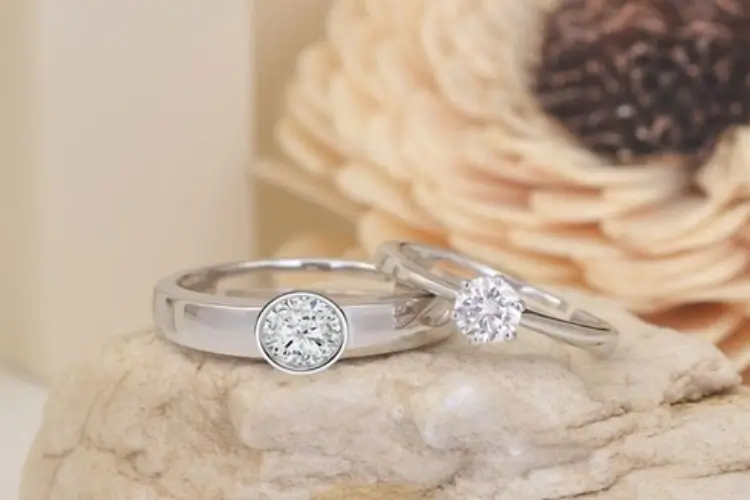Lab-created diamonds have rapidly gained traction in the jewelry market over the past decade. These gemstones, identical in chemical composition and physical properties to their mined counterparts, offer consumers a compelling alternative that aligns with evolving values and preferences.
The surge in popularity stems from several key factors. Affordability plays a significant role, as lab-grown diamonds typically cost 30-40% less than mined diamonds of comparable quality. This price difference allows consumers to acquire larger stones or more intricate designs within their budget. For example, a 1-carat lab-grown diamond engagement ring might cost the same as a 0.7-carat natural diamond ring, giving couples the option to choose a more impressive centerpiece without increasing their spending.
Environmental and ethical considerations also drive the growing demand. Lab grown diamond manufacturers employ sustainable practices, significantly reducing the ecological impact associated with diamond mining. The controlled laboratory environment eliminates concerns about worker exploitation and conflict funding, issues that have long plagued the mined diamond industry. This aspect particularly resonates with younger consumers who prioritize sustainability and social responsibility in their purchasing decisions.
Technological Advancements and Industry Response
Technological advancements have dramatically improved the quality and variety of lab-created diamonds. Modern techniques, such as Chemical Vapor Deposition (CVD) and High Pressure-High Temperature (HPHT) processes, produce gems that are indistinguishable from natural diamonds, even to trained gemologists using specialized equipment. This level of perfection, combined with the ability to create rare fancy colored diamonds, has expanded the creative possibilities for jewelry designers.
The jewelry industry has responded to this shift in consumer preferences. Major retailers and luxury brands have introduced lab diamond collections, legitimizing these gems in the high-end market. For instance, Pandora, one of the world’s largest jewelry retailers, announced in 2021 that it would stop using mined diamonds and switch exclusively to lab-created diamonds. Similarly, De Beers, traditionally associated with mined diamonds, launched Lightbox, a lab-grown diamond jewelry brand, signaling a significant shift in the industry.
The customization potential of lab diamonds adds another layer of attraction. Consumers can work with jewelers to create bespoke pieces, specifying exact color, clarity, and carat weight. This level of personalization is often more challenging and expensive with mined diamonds. Some companies even offer to grow diamonds from a lock of hair or cremation ashes, creating deeply personal and emotionally significant pieces of jewelry.
Changing Consumer Perceptions and Market Trends
Millennials and Gen Z consumers, in particular, have embraced lab diamond jewelry. These generations prioritize sustainability and social responsibility in their purchasing decisions. The transparency of the lab diamond production process appeals to their desire for ethically sourced products. A survey by MVI Marketing found that 70% of millennials would consider a lab-grown diamond for an engagement ring center stone.
Celebrity endorsements and media coverage have also contributed to the growing appeal of lab diamonds. High-profile figures sporting lab-created diamond jewelry at red carpet events have helped dispel any lingering perceptions of inferiority associated with these gems. For example, actor Billy Porter wore a $2 million necklace featuring 500 carats of lab-grown diamonds to the 2020 Oscars, generating significant buzz and interest in lab-created diamonds.
Education plays a crucial role in the rising popularity of lab diamond jewelry. As consumers become more informed about the benefits and quality of lab-created diamonds, they feel more confident in their purchases. Many jewelry retailers now offer detailed information about the origins and characteristics of lab diamonds, empowering buyers to make informed decisions. This transparency has been crucial in building trust and acceptance among consumers.
Future Outlook and Industry Impact
Looking ahead, the popularity of lab diamond jewelry shows no signs of waning. Industry analysts predict continued growth in this sector, with lab-created diamonds potentially capturing a significant portion of the diamond market in the coming years. A report by Bain & Company suggests that the lab-grown diamond market could grow 15-20% annually, potentially reaching 10-15% of the total diamond jewelry market by 2030.
This trend has prompted changes in the mined diamond industry. Some traditional diamond companies have invested in lab-grown diamond production, while others have focused on emphasizing the unique value and rarity of natural diamonds. This competition has led to increased transparency and ethical practices across the entire diamond industry, benefiting consumers regardless of their preference for natural or lab-grown diamonds.
The availability of high-quality lab diamonds has also inspired jewelry designers to push creative boundaries. With more affordable and consistent supply, designers are creating bold, avant-garde pieces that were previously impractical or cost-prohibitive with natural diamonds. This innovation is attracting a new generation of jewelry enthusiasts who value unique, contemporary designs.
In conclusion, the popularity of lab diamond jewelry represents a significant shift in the luxury goods market. It reflects changing consumer values, technological progress, and a growing awareness of environmental and ethical issues. As lab-created diamonds continue to gain acceptance and admiration, they are not just an alternative to natural diamonds but a distinct category of fine jewelry with its own appeal and place in the market. The future of the diamond industry will likely be shaped by the coexistence of both natural and lab-created diamonds, offering consumers more choices and fostering innovation in jewelry design and production.




